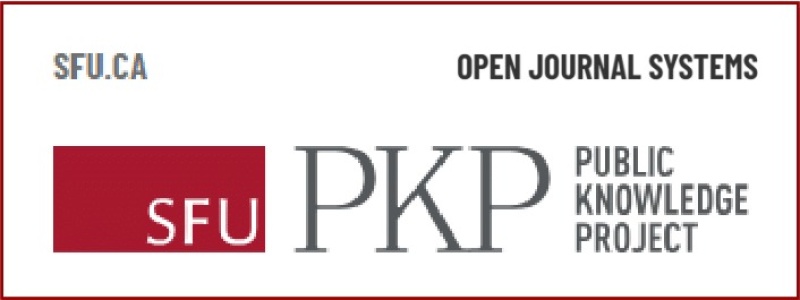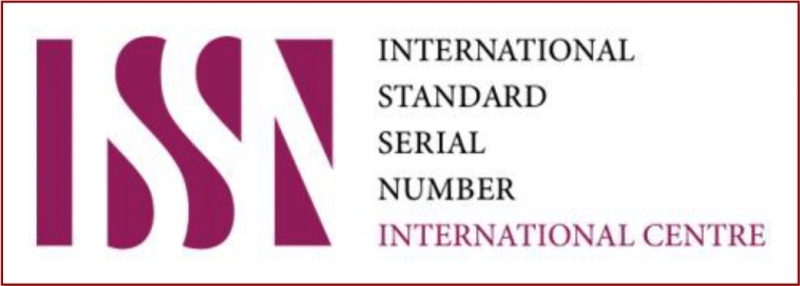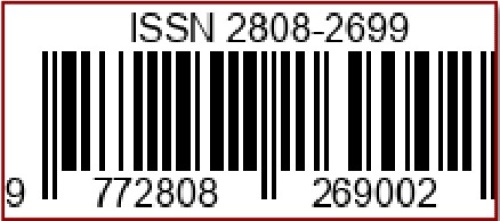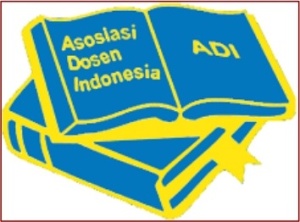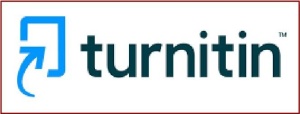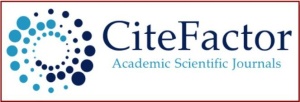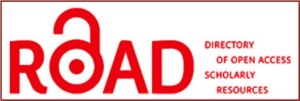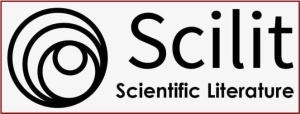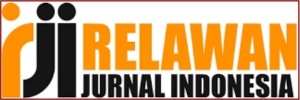Artikel Review : Bioaktivitas Bunga Rosella (Hibiscus sabdariffa L.) Beserta Pemanfaatannya
DOI:
https://doi.org/10.36312/educatoria.v3i3.200Keywords:
Hibiscus sabdariffa, Antibacterial, Antioxidant, Anthocyanin.Abstract
Hibiscus sabdariffa is a species of the Malvaceae family which has long been used by humans as a traditional medicine. The use of Hibiscus sabdariffa as a traditional medicine is related to its bioactivity. Hibiscus sabdariffa has several pharmacological potentials, namely: 1) anticancer; 2) antioxidants; 3) antibacterial; 4) antiaging; 5) antiseptic; and 6) antihypertensive. The method of writing this article is a literature review published online, especially on Google Scholar using the keywords Hibiscus sabdariffa, bioactivity and utilization of Hibiscus sabdariffa. The results of this review state that rosella flowers (Hibiscus sabdariffa L.) have potential as anticancer, antioxidants, antihypertensive antibacterials, and low caffeinated tea drinks.
Downloads
References
Abdallah, E. M. (2016). Aktivitas Antibakteri Hibiscus sabdariffa L. Calyces terhadap Isolat Rumah Sakit Acinetobacter baumannii yang Resistan terhadap Berbagai Obat. Jurnal Penyakit Akut, 5(6), 512-516. https://doi.org/10.1016/j.joad.2016.08.024
Ademiluyi, A. O., & Oboh, G. (2013). Aqueous Extracts of Roselle (Hibiscus sabdariffa Linn.) Varieties Inhibit a-Amylase and a-Glucosidase Activities In Vitro. Journal of Medicinal Food, 16(1), 88-93. https://doi.org/10.1089/jmf.2012.0004
Arifianti, S. R., Fatmawati, D. W. A., & Gunadi, A. (2016). Daya Antibakteri Air Rebusan Bunga Rosella (Hibiscus sabdariffa Linn) dan Daun Teh Hitam (Camellia sinensis varian Assamica) terhadap Penurunan Jumlah Koloni Bakteri pada Sikat Gigi. e-Jurnal Pustaka Kesehatan, 4(3), 590-594.
Astuti, R., & Fadila, A. R. (2020). Hibiscus sabdariffa (Rosela) sebagai Alternatif Minuman Teh Berkafein Rendah. Jurnal Cendekia Sambas, 1(2), 69-77.
Burnham, P. M., & Hendrixson, D. R. (2018). Campylobacter jejuni: Collective Components Promoting a Successful Enteric Lifestyle. Nature Review Microbiology, 16(1), 551-565. https://doi.org/10.1038/s41579-018-0037-9
Denissen, J., Reyneke, B., Reyneke, M. W., Havenga, B., Barnard, T., Khan, S., & Khan, W. (2022). Prevalence of ESKAPE Pathogens in the Environment: Antibiotic Resistance Status, Community-Acquired Infection and Risk to Human Health. International Journal of Hygiene and Environmental Health, 244(1), 1-15. https://doi.org/10.1016/j.ijheh.2022.114006
Fadila, N. Z. (2022). Khasiat Ekstrak Etanol Teh Hijau terhadap Pseudomonas aeruginosa. Panthera : Jurnal Ilmiah Pendidikan Sains dan Terapan, 2(4), 236-242. https://doi.org/10.36312/pjipst.v2i4.125
Fauzan, A., Dewi, S. S., & Wilson, W. (2019). Efektifitas Daya Hambat Ekstrak Etanol Bawang Daun (Aliium fistulosum L.) terhadap Bakteri Salmonella typhi, Escherichia coli, dan Staphylococcus aureus. Jurnal Labora Medika, 3(2), 54-57. https://doi.org/10.26714/jlabmed.3.2.2019.54-57
Hassan, S. T. S., Berchova, K., Majerova, M., Pokorna, M., & Svajdlenka, E. (2015). In Vitro Synergistic Effect of Hibiscus sabdariffa Aqueous Extract in Combination with Standard Antibiotics Against Helicobacter pylori Clinical Isolates. Journal of Pharmaceutical Biology, 54(9), 1736-1740. https://doi.org/10.3109/13880209.2015.1126618
Imran, A. (2023). Literature Review : Potensi Tanaman Mawar Merah (Rosa damascena) beserta Kandungan Senyawa di Dalamnya. Biocaster : Jurnal Kajian Biologi, 3(3), 119-129. https://doi.org/10.36312/biocaster.v3i3.193
Khairuddin., Taebe, B., Risna., & Rahim, A. (2018). Isolasi dan Karakterisasi Senyawa Alkaloid Ekstrak Metanol Klika Faloak (Sterculia populifolia). Ad-Dawaa’: Journal of Pharmaceutical Sciences (DJPS), 1(2), 62-70. https://doi.org/10.24252/djps.v1i2.11337
Kurniawati, I. F., & Sutoyo, S. (2021). Review Artikel: Potensi Bunga Tanaman Sukun (Artocarpus Altilis [PARK. I] Fosberg) sebagai Bahan Antioksidan Alami. Unesa Journal of Chemistry, 10(1), 1-11. https://doi.org/10.26740/ujc.v10n1.p1-11
Kurnijasanti, R., Mahendra, I., Dahnia, N., Mung, R., Margaretha., & Hutafea, A. (2013). Efek Sitotoksik In Vitro dari Ekstrak Bunga Rosella (Hibiscus sabdariffa) terhadap Kultur Sel Kanker Myeloma. Journal of Basic Medical Veterinary, 2 (2), 86-89.
Laeliocattley, R. A., Prasiddha, I. J., Estiasih, T., Maligan, J. M., & Muchlisyiyah, J. (2014). Potensi Senyawa Bioaktif Rambut Jagung (Zea mays L.) Hasil Fraksinasi Bertingkat Menggunakan Pelarut Organik untuk Tabir Surya Alami. Jurnal Pangan dan Agroindustri, 15(3), 175-184.
Malinda, O., & Syakdani, A. (2020). Potensi Antioksidan dalam Kelopak Bunga Rosella (Hibiscus sabdariffa L.) sebagai Antiaging. Kinetika: Jurnal Hasil Penelitian dan Ulasan Ilmiah, 11(3), 60-65.
Nuraini, B. (2015). Risk Factors of Hypertension. Majority: Medical Journal of Lampung University, 4(5), 10-19.
Nurhamida, I., Utami, S. D., & Adawiyah, S. R. (2022). Pengaruh Model Pembelajaran Kontekstual Berbantuan Media LKS terhadap Pemahaman Konsep Sains Siswa. Educatoria : Jurnal Ilmiah Ilmu Pendidikan, 2(2), 71-81. https://doi.org/10.36312/ejiip.v2i2.38
Nurnasari, E., & Khuluq, A. D. (2017). Potensi Diversifikasi Rosela Herbal (Hibiscus sabdariffa L.) untuk Pangan dan Kesehatan. Buletin Tanaman Tembakau, Serat dan Minyak Industri, 9(2), 82-92. https://doi.org/10.21082/btsm.v9n2.2017.82-92
Octaviani, L. F., & Rahayuni, A. (2014). Pengaruh Berbagai Konsentrasi Gula terhadap Aktivitas Antioksidan dan Tingkat Penerimaan Sari Buah Buni (Antidesma bunius). Journal of Nutrition College, 3(4), 958-965. https://doi.org/10.14710/jnc.v3i4.6916
Puspitasari, I. (2020). Profil Multidrug Resistant Organism (MDRO) di Rumah Sakit Umum Daerah (RSUD) Pasar Minggu. Skripsi. Universitas Islam Negeri Syarif Hidayatullah Jakarta.
Queiroz, O. C. M., Ogunade, I. M., Weinberg, Z., & Adesogan, A. T. (2018). Silage Review: Foodborne Pathogens in Silage and Their Mitigation by Silage Additives. Journal of Dairy Science, 101(5), 4132-4142. https://doi.org/10.3168/jds.2017-13901
Ramadhani, S. (2021). Aktivitas Penghambatan Angiotensin Converting Enzyme (ACE) Biskuit Berbasis Tepung Tempe Kacang Merah (Phaseolus vulgaris). Skripsi. Universitas Islam Negeri Syarif Hidayatullah Jakarta.
Sari, A. N., Kusdianti., & Diningrat, D. S. (2018). Potensi Antioksidan Alami pada Ekstrak Kulit Buah Jamblang (Syzigium cumini (L.) Skeels) Menggunakan Metode DPPH. Jurnal Bios Logos, 8(1), 21-25. https://doi.org/10.35799/jbl.8.1.2018.20593
Shadhan, R. M., & Bohari, S. P. M. (2017). Effects of Hibiscus sabdariffa Linn. Fruit Extracts on a- Glucosidase Enzyme, Glucose diffusion and Wound Healing Activities. Asian Pacific Journal of Tropical Biomedicine, 7(5), 466-472. https://doi.org/10.1016/j.apjtb.2017.01.023
Subaryanti., Triawan, A., & Poeloengan, M. (2013). Bunga Rosella (Hibiscus sabdariffa L.) sebagai Antibakteri. Sainstech Jurnal Penelitian dan Pengkajian Sains dan Teknologi, 23(1), 78-83. https://doi.org/10.37277/stch.v23i1.569
Surbakti, E. S. B., & Berawi, K. N. (2016). Tomat (Lycopersicum esculentum Mill.) sebagai Anti Penuaan Kulit. Medical Journal of Lampung University, 5(3), 73-78.
Syahputra, A., Hanifah, D. S., & Kardhinata, E. H. (2017). Keragaman Morfologi dan Genotipe Tanaman Rosella (Hibiscus sabdariffa L.) Generasi M2 Hasil Iradiasi Sinar Gamma. Jurnal Pertanian Tropik, 4(3), 252-260. https://doi.org/10.32734/jpt.v4i3.3101
Tena, J. G., Brown, B. M., Cano, J., Trenor, B., Yang, P. C., Saiz, J., Clancy, C. E., & Romero, L. (2020). When Does the IC50 Accurately Assess the Blocking Potency of a Drug? Journal Chemical Information and Modeling, 60(3), 1779-1790. https://doi.org/10.1021/acs.jcim.9b01085

Downloads
Published
How to Cite
Issue
Section
License
Copyright (c) 2023 I Wayan Karmana

This work is licensed under a Creative Commons Attribution-ShareAlike 4.0 International License.
-
Attribution — You must give appropriate credit, provide a link to the license, and indicate if changes were made. You may do so in any reasonable manner, but not in any way that suggests the licensor endorses you or your use.
-
ShareAlike — If you remix, transform, or build upon the material, you must distribute your contributions under the same license as the original.

